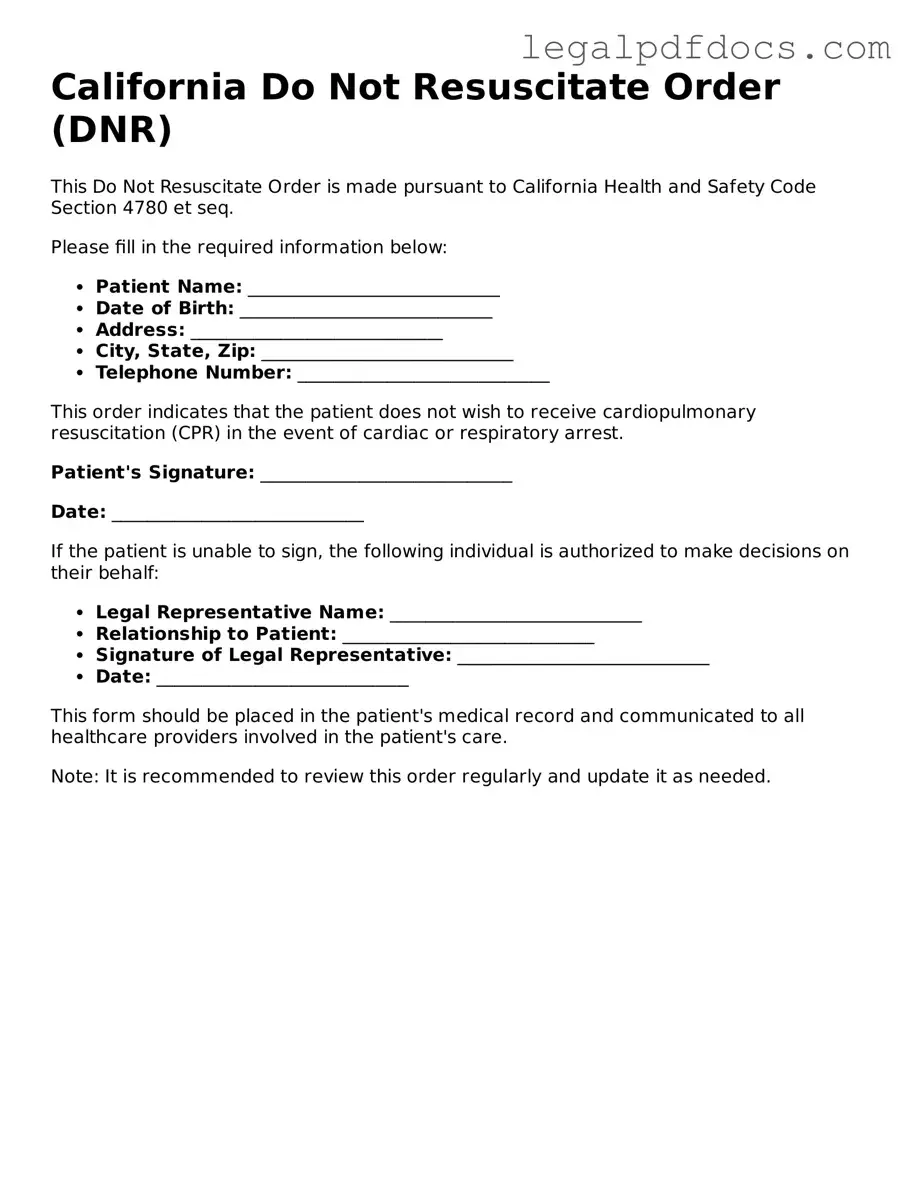Official Do Not Resuscitate Order Form for California
A California Do Not Resuscitate (DNR) Order form is a legal document that allows individuals to express their wishes regarding resuscitation efforts in case of a medical emergency. This form ensures that medical personnel respect a person's desire not to undergo CPR or other life-saving measures. Understanding and completing this form can provide peace of mind for both individuals and their loved ones.
Take control of your healthcare decisions. Fill out the DNR Order form by clicking the button below.
Open Do Not Resuscitate Order Editor Here
